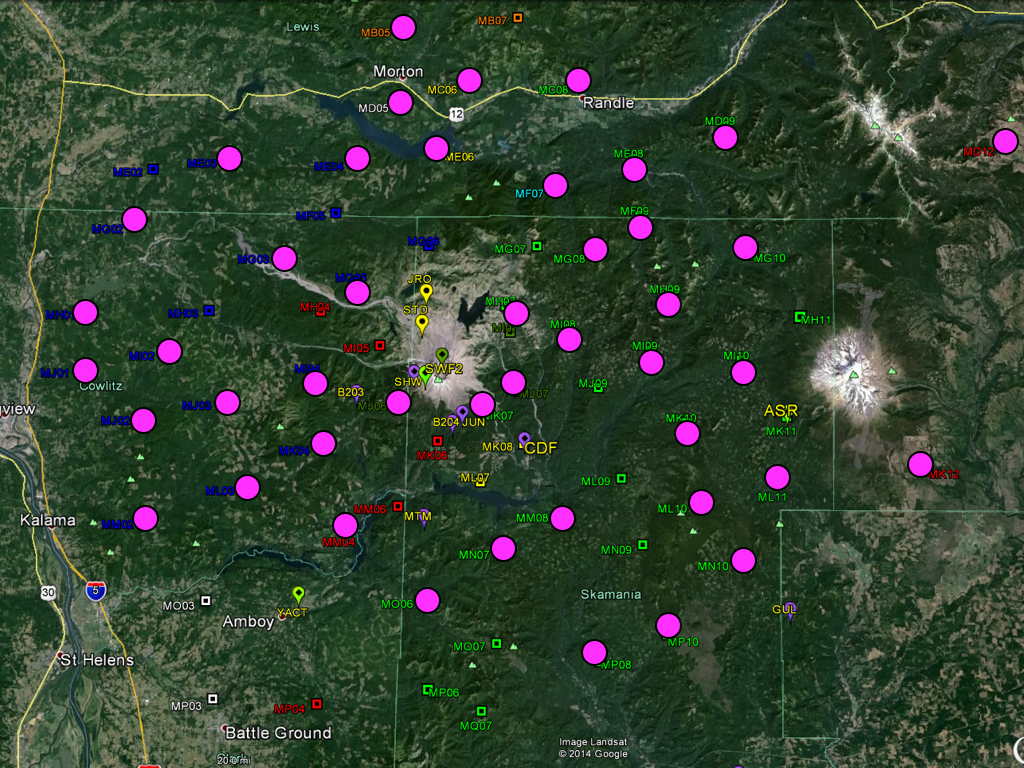What could go wrong with setting off explosives all around an active volcano? As scary as it might sound, this is a carefully planned experiment to peer inside Mount St. Helens’ mysterious underground magma chamber. No, we aren’t blasting the volcano open, but the induced seismicity will let geologists finally map what the volcano looks like 80km below the surface.
For all of Mount St Helens’ infamy, geologists know very little of what goes on underneath. The underground plumbing that feeds magma through the volcano, which isn’t the usual spherical chamber, has eluded scientists all these years. And so they’re turning to what Nature calls “one of the biggest-ever seismology deployments at an active volcano.” And this isn’t just any active volcano, remember, but the one responsible for the deadliest eruption in US history.
The explosions are part of a research project called iMUSH, or Imaging Magma Under St. Helens. As Nature reports, the project staff will be hiking through the mountain to set up for the experiment this coming week: “They will drill 24 holes some 25 metres deep, drop in industrial explosives used for quarrying, and refill the holes…The plan is to detonate the explosives in separate shots over four nights. Each blast will shake the ground as much as a magnitude-2 earthquake.” The movement of these shock waves through the Earth will let geologists map the underground chambers of the volcano.

Map of the 70 passive seismic stations. iMUSH
In addition to the 3500 small seismometers listening in on these induced quakes, iMUSH has also set up passive monitoring stations to track natural seismic activity. Seventy of these larger seismometers are tucked inside 44-galloon plastic trash cans buried all over the mountain. They have already picked up one deep, natural earthquake in late June. A third part of the project involves sensors that track the Earth’s electromagnetic field.
The entire project with passive monitoring stations will continue until summer 2016. This summer, the explosions and earthquakes will provide valuable information for mapping the underground volcano. All assurances aside, I’m still glad I’m far, far away from Mount St. Helens right now. [Nature, The Columbian]
Picture: A plume rising from Mount St. Helens in 1982, two years after the eruption.
